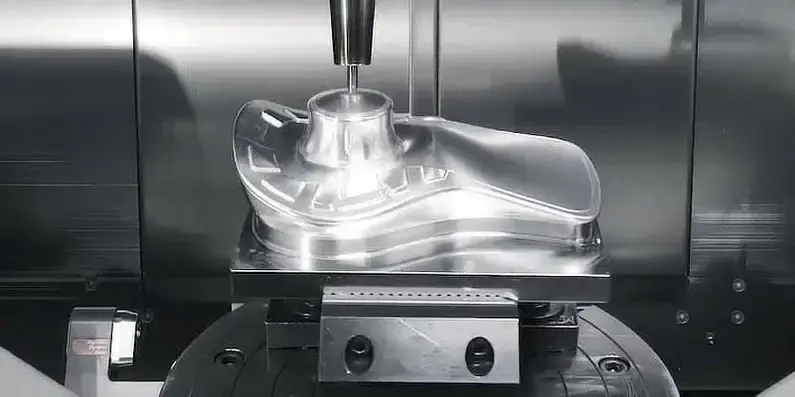6 min read
3D Printing and Nanotechnology
3D printing and nanotechnology are two fields of research and innovation that, at first glance, might appear worlds apart. The former focuses on...

With stainless steel production measuring about 52.2 million metric tons in 2019 alone, it is clear that this powerful material is in high demand, especially in the past decade. From home décor stainless steel to CNC machined stainless steel, it has been proven a robust and reliable resource since the 19th century when Harry Brearley, a UK native, first created it. Now, if you are on this page, chances are you are looking to understand more about stainless steel as a whole, or are perhaps seeking more information to successfully choose a CNC online stainless steel option that fulfills your needs.
Whatever the case may be, below you will find a comprehensive overview of what stainless steel actually is, what it is best used for, and give you the fundamental details as to why this profound material is so attractive.
Chances are you have heard of stainless steel before, but have you truly taken the time to dissect what it actually is? For starters, stainless steel is a generic umbrella term for several steel types. Like other steels, stainless steel is made up of both iron and carbon within a two-step process. But what makes this type different from the rest is the addition of chromium and other differentiating alloying elements like nickel that make stainless steel such a corrosion-resistant material.
Fact: when chromium is added to steel during production, it forms into a chromium oxide, acting as a protective surface that prevents moisture and air from causing rust, hence the name, stainless steel.

CNC machining in progress for a stainless steel part
There are over 100 different grades of stainless steel. However, they are categorised into five primary types:

Parts CNC machined by Weerg with 5-axis Hermle c42u on steel 304
Aside from its aesthetically pleasing make-up, stainless steel offers a vast range of benefits, which are leading reasons why it has become such a popular resource used in society today. Not only is durable, resistant to rust, heat, and corrosion, but it is also effortless to clean and does not hold onto water, making it very easy to maintain long term. And even cooler fact (literally) is that stainless steel does not get heated in warm or hot weather. For instance, if you were to place a hot item on a railing or surface, that heat would not be protruded to other areas.
If you are like many, you might be wondering what the underlying differences are between titanium and stainless steel. For starters, the main difference is the fact that stainless steel is an alloy metal, whereas titanium is actual metal. The characteristics of stainless steel stem from additive alloying metals during creation, and titanium's features are natural. Based on this and unique circumstances, one might be the better option over the other. For example, titanium is favoured by some manufactures because of its low density (weight), and others take stainless steel over titanium because of its strength and weldability. In summary, the choice boils down to priorities and what specific industries are looking for, weight over durability, or vice versa.
With the above as a key outline, you should be able to have much more clarity in the direction you should go in to select the right stainless steel type for your project. For some guidance, if you are looking for CNC machined stainless steel, austenitic is often considered difficult for machining. Sticking closer to the 400 series of stainless steel should be much easier for you to machine than the 300 series, including 304 and 316L which at Weerg are at your disposal to make your parts.
Grade 316L stainless steel in a molybdenum bearing austenitic. It is more resistant to general corrosion and pitting than conventional nickel chromium stainless steels such as 302-304. It has the following characteristics:
1. higher creep resistance
2. excellent formability.
3. rupture and tensile strength at high temperatures
4. corrosion and pitting resistance
Grade 304 stainless steel is generally regarded as the most common austenic stainless steel. It contains high nickel content that is typically between 8 and 10.5 percent by weight and a high amount of chromium at approximately 18 to 20 percent by weight.
The properties are very similar to those of 316L but there are some considerations to make:
Here are some situations where 304 stainless steel may be the better choice:
1. the application requires excellent formability. The higher molybdenum content in Grade 316 can have adverse effects on formability.
2. the application has cost concerns. Grade 304 is typically more affordable than Grade 316.
Here are some situations where 316L stainless steel may be the better choice:
1. the environment includes a high amount of corrosive elements.
2. the material will be placed underwater or be exposed to water consistently.
3. in applications where greater strength and hardness are required.
Sources and further reading
https://www.statista.com/statistics/223028/world-stainless-steel-production/#:~:text=In%202019%2C%20global%20stainless%20steel,below%2030%20million%20metric%20tons.
https://en.wikipedia.org/wiki/Harry_Brearley
https://www.thermofisher.com/blog/metals/what-is-stainless-steel-part-i/
https://geospacemfg.com/blog/machining-304-316-stainless-steel/
https://tampasteel.com/5-differences-between-stainless-steel-and-aluminum/

6 min read
3D printing and nanotechnology are two fields of research and innovation that, at first glance, might appear worlds apart. The former focuses on...

6 min read
Padel has seen exponential growth in Italy and worldwide in recent years. A glance at sports clubs in major cities and smaller towns alike reveals an...

6 min read
The game of chess boasts a history spanning millennia, seamlessly merging art, strategy, and culture into a singular experience that has captivated...